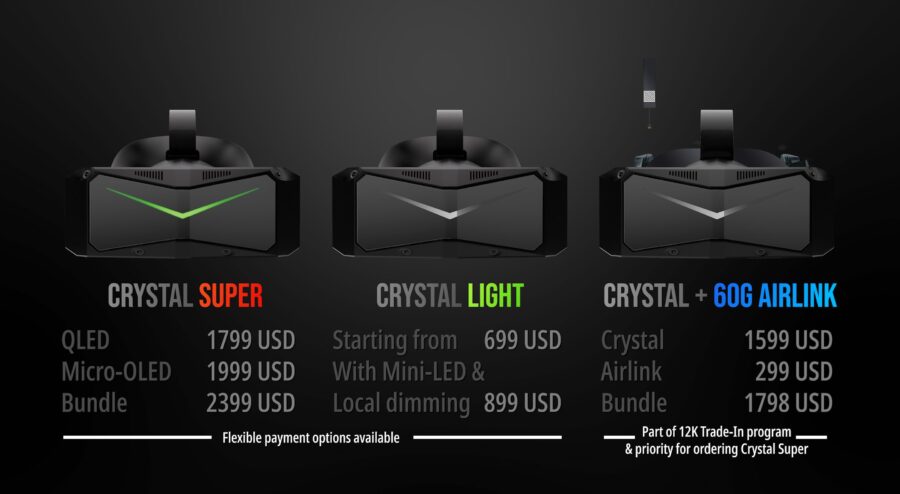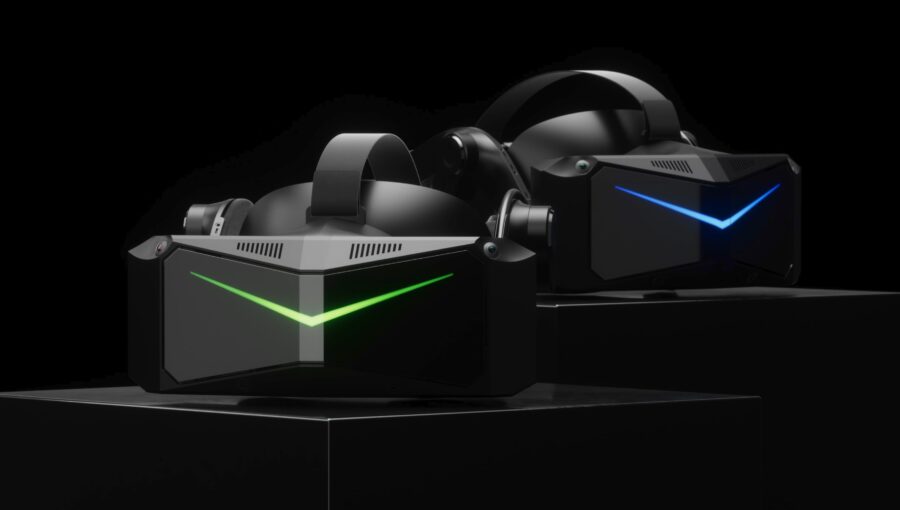
Pimax, a virtual reality (VR) hardware manufacturer and provider of ultra-wide field of view (FOV) and high-resolution consumer VR devices, has today announced two new high-end VR headsets along with a wireless solution for VR gameplay at its Frontier 2024 event, held on YouTube.
Pimax Crystal Super VR Headset
During the company’s event, the Pimax Crystal Super headset was announced as the first of its kind. This headset offers exceptional quality with 29.5 million pixels and a unique feature – the world’s first interchangeable optical engine. Users can easily switch between QLED and micro-OLED panels.
Pimax stated that the Crystal Super represents a “substantial” leap forward from its Crystal headset, offering a greatly increased number of pixels to enable a much larger field of view and higher pixels per degree (PPD) simultaneously.
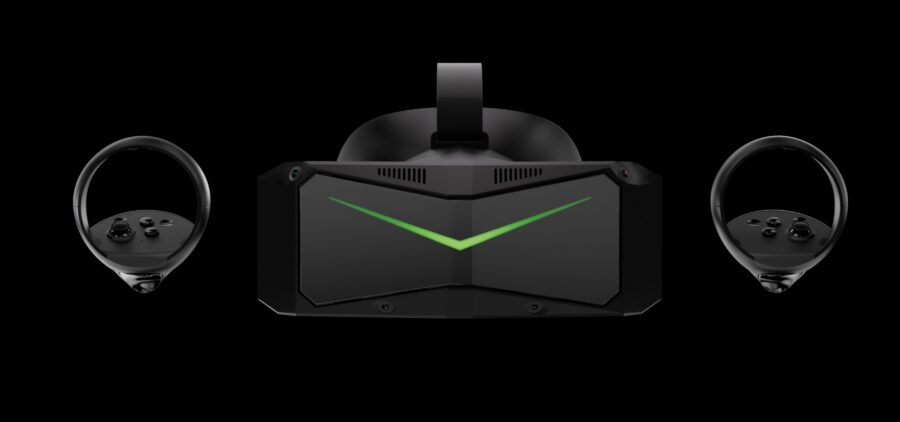
In addition to FOV and PPD, the selection of screens is very important for enhancing user experience. Both QLED and micro-OLED displays have their own unique benefits. Therefore, Pimax has created the Crystal Super headset to give users the option to choose between these two types of displays or even have both simultaneously. This achievement is made possible by Pimax’s groundbreaking invention of the world’s first replaceable optical engine system. This system combines the displays and lenses into a single detachable module. The QLED engine is paired with interchangeable glass aspheric lenses, while the micro-OLED engine uses glass pancake lenses.
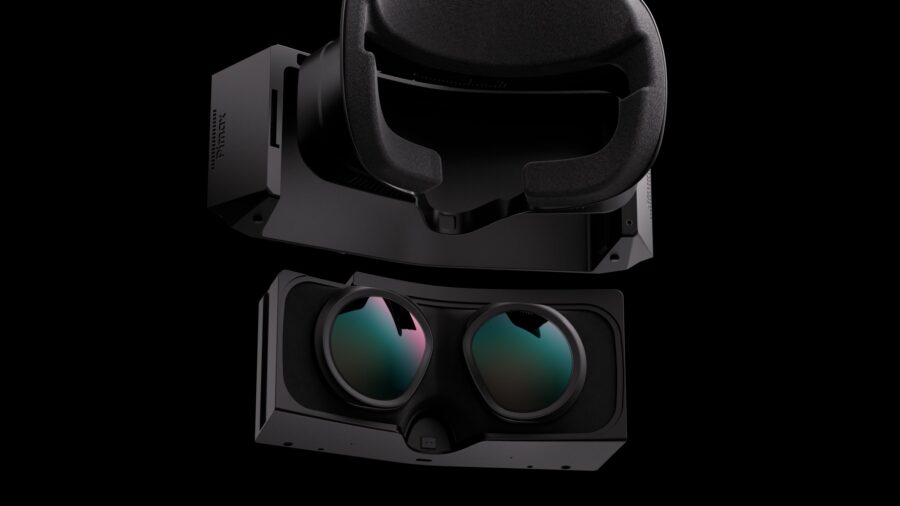
The headset additionally offers advanced tracking using four cameras, eye-tracking for automatic adjustments of the distance between pupils, dynamic rendering that focuses on the center of vision, and built-in audio. Pimax mentioned that the Crystal Super is specifically designed as a PCVR headset and therefore does not include Qualcomm’s XR2 chipset or a battery.
The Pimax Crystal Super has a starting price of USD $1,799 (excluding VAT) and is expected to be shipped in the fourth quarter of this year.
Pimax Crystal Light VR Headset
Today, Pimax introduced the Crystal Light as their second headset. This device features the same 16.6 million pixels as the original Pimax Crystal, but comes at a more affordable cost, starting from USD $699 rather than the Crystal’s price of USD $1,599.
The Crystal Light serves as a streamlined iteration of the Pimax Crystal, retaining core specifications from the Crystal, while removing features less essential to PCVR. This new, budget-friendly model is therefore a pure PCVR headset with no battery, no XR2 processor, and no standalone capabilities. That being said, the headset still boasts a resolution of 2880 x 2880 pixels per eye, with a maximum refresh rate of 120 Hz, and continues to employ glass aspheric lenses.
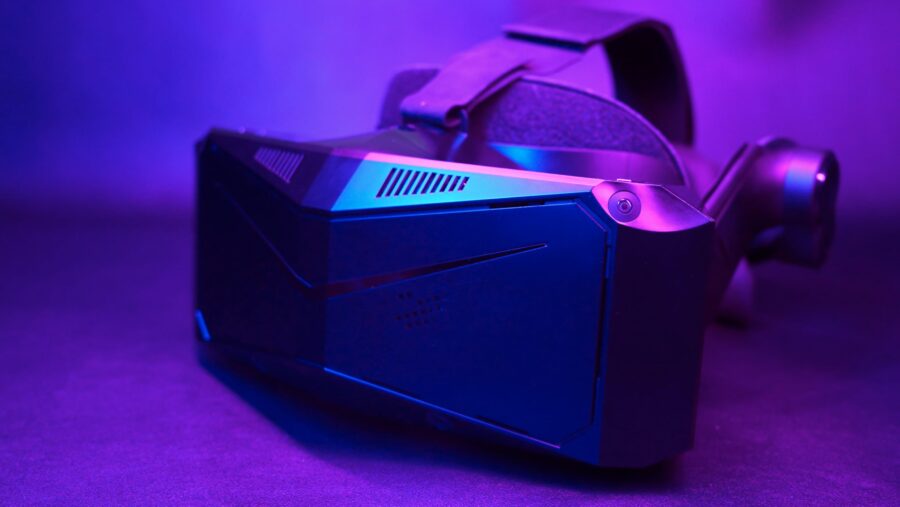
Unlike other Pimax headsets though, the Crystal Light does not feature interchangeable lenses, nor does it include eye-tracking. However, Pimax’ upgraded Fixed Foveated Rendering technology, which does not rely on the eye-tracking (unlike Dynamic Foveated Rendering), is included, which the company stated will help to compensate for potential GPU power limitations.
Pimax stated that overall these adjustments have decreased the device’s weight by 30%, which has in turn enhanced the headset’s ergonomics and level of comfort, and has helped to significantly reduce costs on the Crystal Light.
This has enabled Pimax to position the device at a starting price of USD $699. The Crystal Light is available for pre-order now, with shipping starting in May.
Is there a possibility that Pimax Crystal will no longer be produced?
Pimax made it clear that they are not planning to stop producing the Pimax Crystal headset even with the release of the two new models. They are committed to improving the Crystal, which was initially designed as a high-end wireless PCVR headset. The Crystal requires extensive bandwidth and efficient utilization for wireless VR usage. This is why it incorporates the XR2 chip and battery, which are essential components of the device. The original Pimax Crystal is also the only model in the Crystal lineup that includes the Qualcomm XR2 chipset and a battery.
Pimax Crystal Airlink
In order to achieve this high level of bandwidth and wireless efficiency, Pimax also unveiled today its 60G Airlink module – a combined transmitter and receiver, plus a lightweight dongle that attaches to the headset via a micro-HDMI connection. The transmitter and receiver connect to a PC through HDMI, forming a complete hardware suite for wireless operation.
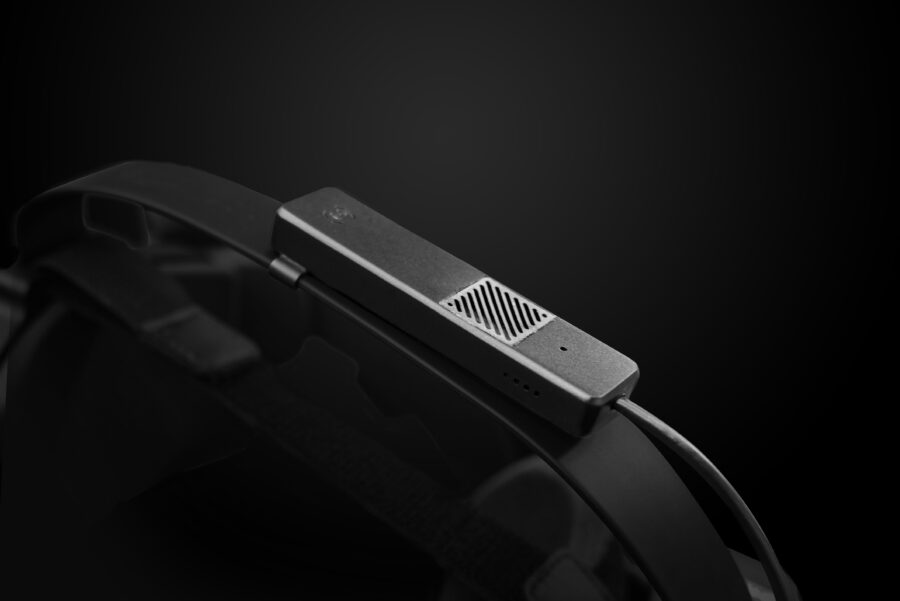
Pimax claims that the 60G Airlink module utilizes WiGig technology, providing a much greater bandwidth compared to regular WiFi. This enables high-quality wireless PCVR.
Pimax announced that the 60G Airlink module will enable the Pimax Crystal to display its complete resolution of 2880 x 2880 pixels per eye. It will also maintain a refresh rate of 90 Hz with minimal delay. The estimated battery duration for the device is 2-3 hours.
The cost of the 60G Airlink is $299 USD, and it will be available for shipping later this year.
For more information on Pimax and its newly announced Crystal Super, Crystal Light and 60G Airlink devices, please visit the company’s website.
What is the price of Pimax VR headsets?
